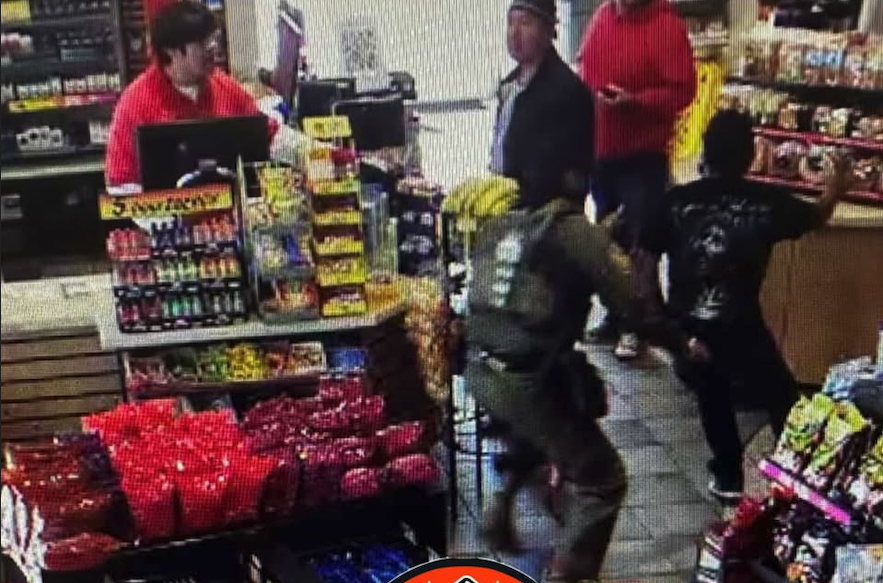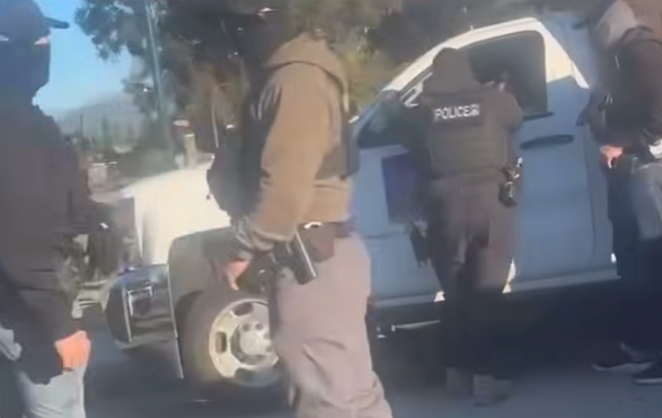Los Angeles County prosecutors declined to criminally charge two L.A. County Sheriff’s Deputies for shooting and killing 29-year-old Dijon Kizzee two years ago.
Kizzee was initially approached by deputies Christian Morales and Michael Garcia in the Westmont area of South L.A. for allegedly riding a bicycle against traffic on the last day of August in 2020. Video footage shows Kizzee running away from the deputies before they catch up with him and a scuffle ensues. The sheriff's department alleges that Kizzee punched Morales and then reached for a firearm that he dropped on the ground but activists and witnesses dispute that claim.
Following Kizzee’s death, several days of protests broke out at the sheriff's station around the corner from where he was killed, resulting in activists, journalists, and legal observers being targeted by deputies in riot gear with “less-than-lethal” munitions and batons. In two years, Los Angeles County Sheriff’s Deputies killed at least three young men within a couple of blocks of the station, including Kizzee.
L.A. County Sheriff's killed 3 people: AJ Weber, Robert Avitia and Dijon Kizzee all within a couple blocks of one another in Westmont. There is a LASD station and an elementary school blocks away. This weekend, the community came together to demand justice for the victims. pic.twitter.com/6nyyms3XF8
— Lexis-Olivier Ray (@ShotOn35mm) September 15, 2020
In a nearly 20-page, November 10th memo reviewed by L.A. TACO and first reported by The Times on Tuesday, the Los Angeles County District Attorney’s Office “concluded that Morales and Garcia reasonably believed, based on the totality of the circumstances, that force was necessary to defend against a threat of death.”
The memo shows that prosecutors' decision not to charge Morales and Garcia was largely based on statements made by the deputies. There’s no body-worn camera footage of the incident. And the most crucial moments captured by other cameras were partially obstructed by a wall and a fence. There’s no clear video footage of Kizzee reaching specifically for a gun or pointing it at the deputies. And at least one witness told The Times that Kizzee didn’t throw a punch at Morales and wasn’t holding anything in his hand when deputies fired more than 15 shots at him.
"He put his hands in the air, dropped the bag, and they continued to shoot him, even though he posed no threat,” Ben Crump, a prominent civil rights attorney representing the Kizzee family, said in 2020. An independent autopsy found that Kizzee was shot seven times in the back and five times while on the ground.
Prosecutors determined, however, that: “Although the video evidence does not depict Kizzee pointing a pistol at the deputies, it otherwise confirms their statements about the incident.”
“The deputies’ statements that Kizzee bent down and picked up the pistol are corroborated by other evidence. Video footage shows Kizzee bend down moments after appearing to strike Morales,” prosecutors explained in their memo. “Moreover, [a still image from a video] shows a black item consistent with a gun within inches of his body,” seconds after deputies stopped firing at Kizzee.
Photos taken later at the scene show that the gun was “many feet” away from Kizzee, however. Prosecutors determined that photos from the scene “corroborates the deputies’ statements that he picked up the pistol before he turned away from them and then dropped it next to his body near the driveway apron.”
During interviews with investigators, both deputies claimed that they feared for their lives when Kizzee allegedly dropped a pistol, reached down for it and pointed it at one of the deputies. California law gives law enforcement officers the legal right to use deadly force only when an officer “reasonably” believes that such force is necessary given the circumstances. There are two scenarios when deadly force is permitted: to defend against the “imminent threat of death” or to apprehend someone that’s committed a felony “that threatened or resulted in death or serious bodily injury.”
On Tuesday, Sheriff Alex Villanueva accused District Attorney George Gascon and the Los Angeles Times of delaying the release of the memo until after the elections, seemingly for political gain. During his presentation, Villanueva claimed that District Attorney George Gascon made a decision about the case back in May.
“That was important information a long time ago, why was it held until two days after the election?” Villanueva questioned.
In a statement to L.A. TACO, a spokesperson for the district attorney's office said that after an initial determination was made earlier this year, "the case was sent through the chain of command and ultimately to the DA. The DA did send the document back down the chain of command. The decision was ultimately finalized by the DA and approved for initiation of the release process on November 2, 2022."
Kizzee's family was reportedly notified on November 10 and the sheriff's department received the report the following business day, on November 14.
"This case required extensive analysis of complicated facts and law. Any delay was caused by an effort to thoroughly evaluate the facts and the law, consider all available avenues of prosecution, to reach a decision based on these facts and law and to make proper notifications to Mr. Kizzee’s family," the spokesperson also said.
In a statement released on Tuesday, District Attorney George Gascon added:
“My heart goes out to Mr. Kizzee’s family for the loss of their loved one. As District Attorney, I have prioritized conducting thorough reviews of homicides and shootings of civilians by law enforcement and have not shied away from pursuing criminal charges against law enforcement officers when I believe the evidence is sufficient to prove a crime was committed beyond a reasonable doubt.
Once the review of the case was finalized through the chain of command, we contacted the family through their attorneys and offered to meet with them, a protocol I implemented as the District Attorney. We thereafter provided them an advanced copy of the shooting memorandum setting forth the rationale for our conclusion that we would not be seeking criminal charges against the two deputies involved in the shooting.
Our analysis does not consider whether a case against these officers could be proven in a civil proceeding or in an administrative proceeding, only whether we could prove the case in a criminal court beyond a reasonable doubt. The memorandum was subsequently provided to the Sheriff.
We will continue to thoroughly review every officer-involved-shooting investigation presented to us and provide the family, the officers, and the public with the rationale for our decision in those cases where we believe we cannot proceed with the filing of a criminal case.”







